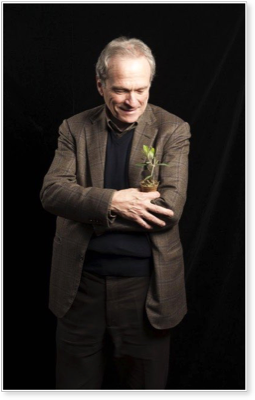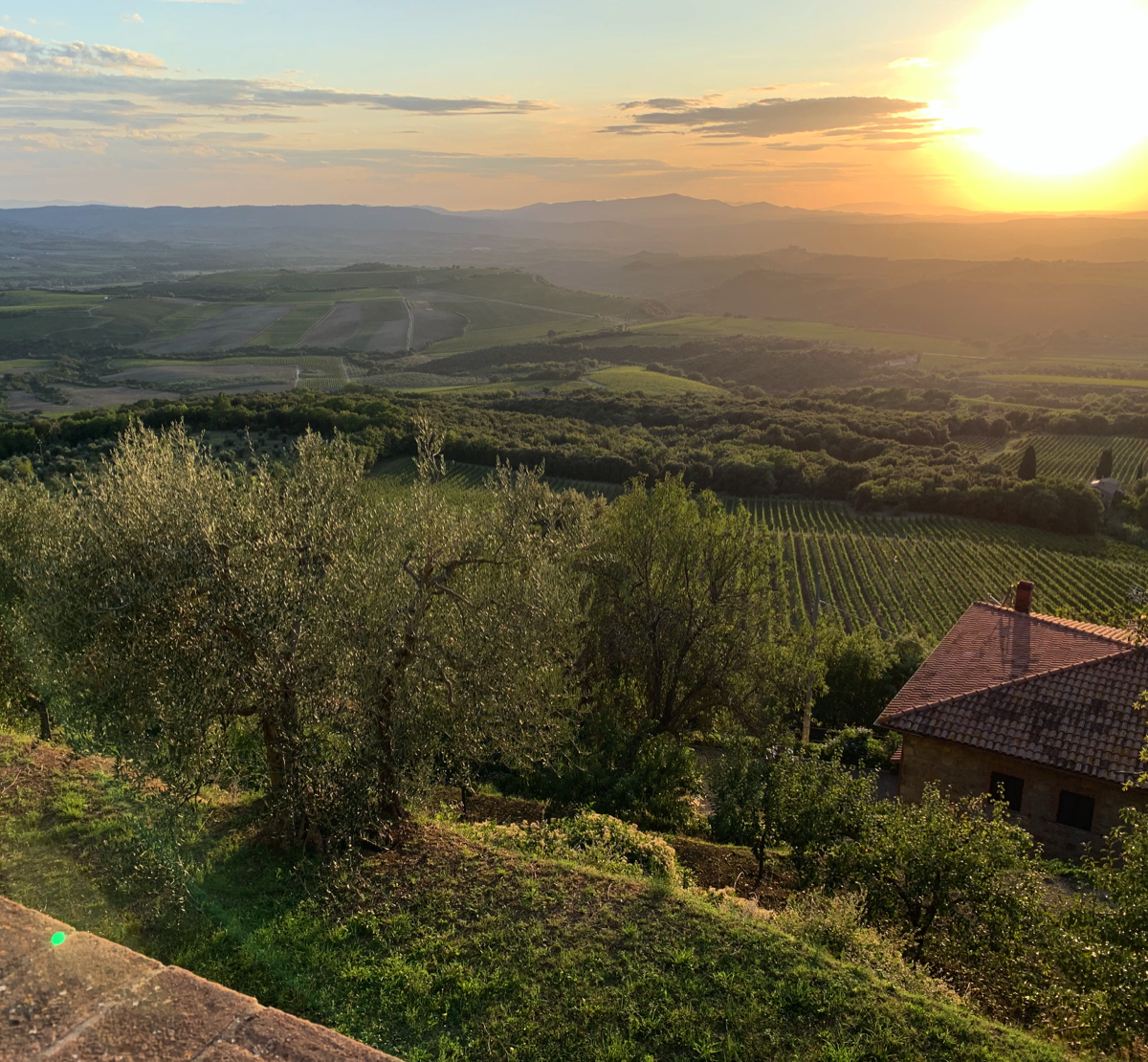
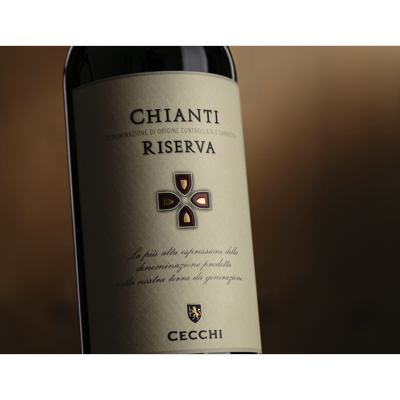
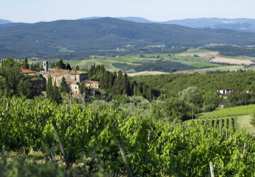

Wineline Magazine
The Black Rooster Roars
The symbol of Chianti Classico is the black rooster. Why? The legend says that in the 13th century Florence and Siena decided to use a horse race to end their land dispute over the Chianti region. The point at which two knights - one from Florence, one from Siena - met at dawn when the rooster crowed would mark the new borders of their territories. Florence cheated a bit by selecting a black rooster and keeping it unfed for a few days. So, on the appointed day, he crowed much earlier than dawn allowing the Florentine knight to leave much earlier than the knight from Siena, meeting him only 12 km from the Sienan walls. Since then, the black rooster has been the symbol of Chianti.
Wine has been produced in the Chianti region since Etruscan times, over 2000 years ago. The earliest incantations of “Chianti” as a wine dates back to the 13th century when it was produced as a white wine. In the middle ages, the villages of Gaiole, Castellina and Radda formed the “League of Chianti” which created an area that would become Chianti Classico. As the wines of Chianti became popular, other villages wanted to get in on the act and have their lands known as Chianti as well. Therefore, the region's boundaries have changed over the years. As the boundaries changed so did the composition of the wine.
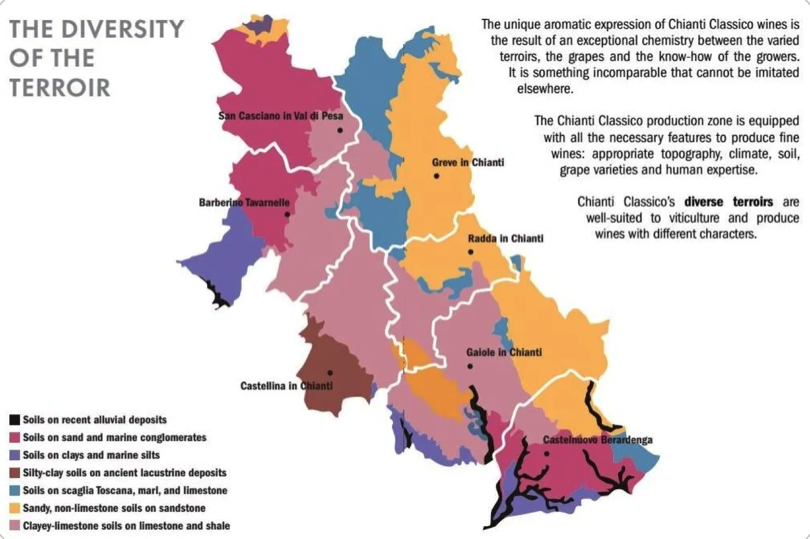
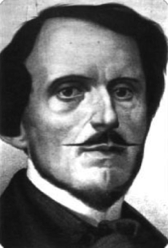
Baron Bettino Ricasoli (future Prime Minister of the Kingdom of Italy) created the first “Chianti recipe” in 1872. His formula consisted of 70% Sangiovese, 15% Canaiolo and 15% Malvasia bianca. In 1967, the Italian government altered the formula to Sangiovese plus 10 - 30% Malvasia and Trebbiano. The late 19th century saw oidium and phylloxera epidemics take its toll on the vineyards. Chaos and poverty followed the Risorgimento and heralded the Italian diaspora that would take Italian vineyard workers and winemakers abroad as immigrants. Those that stayed behind replanted with hearty clones of Sangiovese and Trebbiano. World War II brought other problems including a world wine market looking for cheap, easy drinking wines. By the late 20th century, Chianti was associated with basic mass-marketed wines wrapped in a straw basket, called fiasco.
In 1967, the government established the DOC (Denominazione di origine controllata) regulations for the production of Chianti.
However, around the same time, a group of ambitious producers began working outside the boundaries of the DOC regulations. These producers were renegades and wanted to produce a wine that did not conform the DOC standards. They made “Chianti” as they wished but were prevented from labeling under the DOC nomenclature. They sold their wines under the name vino da tavola. Despite this lower level classification, the wine grew in popularity. They began to add international varieties such as Cabernet Sauvignon or Merlot. The DOC classification was upgraded to DOCG in 1984 which added a guarantee of place and quality to the mix. The marchese Piero Antinori was one of the first to create a "Chianti-style" wine that ignored the DOC regulations, releasing a 1971 Sangiovese-Cabernet Sauvignon blend known as Tignanello in 1978.
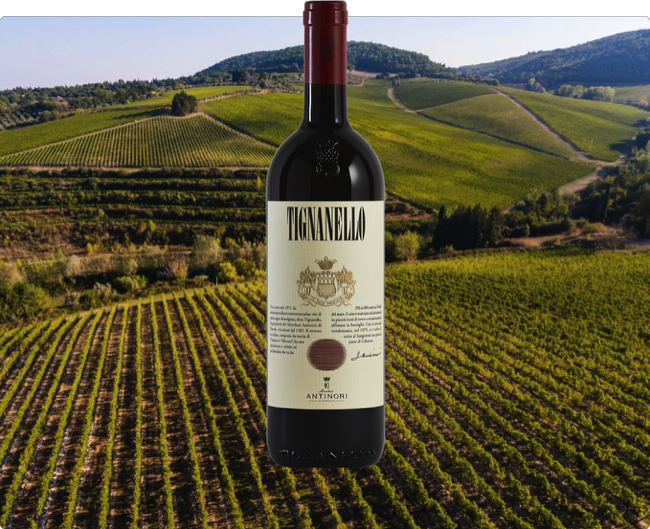
The ever increasing popularity of these wines encouraged the government to reconsider the regulations and allow some of the vino da tavola wines to be labeled as Chianti. The evolution of these “international styled” wines developed into the term “Super Tuscans.” Today, these Super Tuscans are entitled to the DOC Bolgheri or the generic IGT label and, are among the most sought after wines in the world. These innovations have lead to higher ratings and price increases for DOCG Chiantis with many matching the prices of premium Super Tuscans. Listen carefully, can you hear “the roar of the black rooster.”
Essential Facts about Chianti:*
• There are 3,000 producers.
• 15,500 hectares of vineyards.
• 800,000 hectolitres of Chianti are produced.
• 7,200 hectares (17,290 acres) of vineyards entered on the DOCG Register for
the production of Chianti Classico.
• The Chianti Classico region is one of the most important appellations in Italy.
• The classic red grape of the region is the Sangiovese.
• Some famous white grapes for Tuscany include the Vernaccia di San
Gimignano, Trebbiano, and Moscato.
• Cabernet, Merlot and other red grapes blend well with the Sangiovese.
• The three top importers are Germany, the UK, and the US,
respectiively.

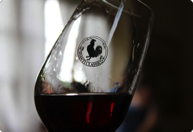
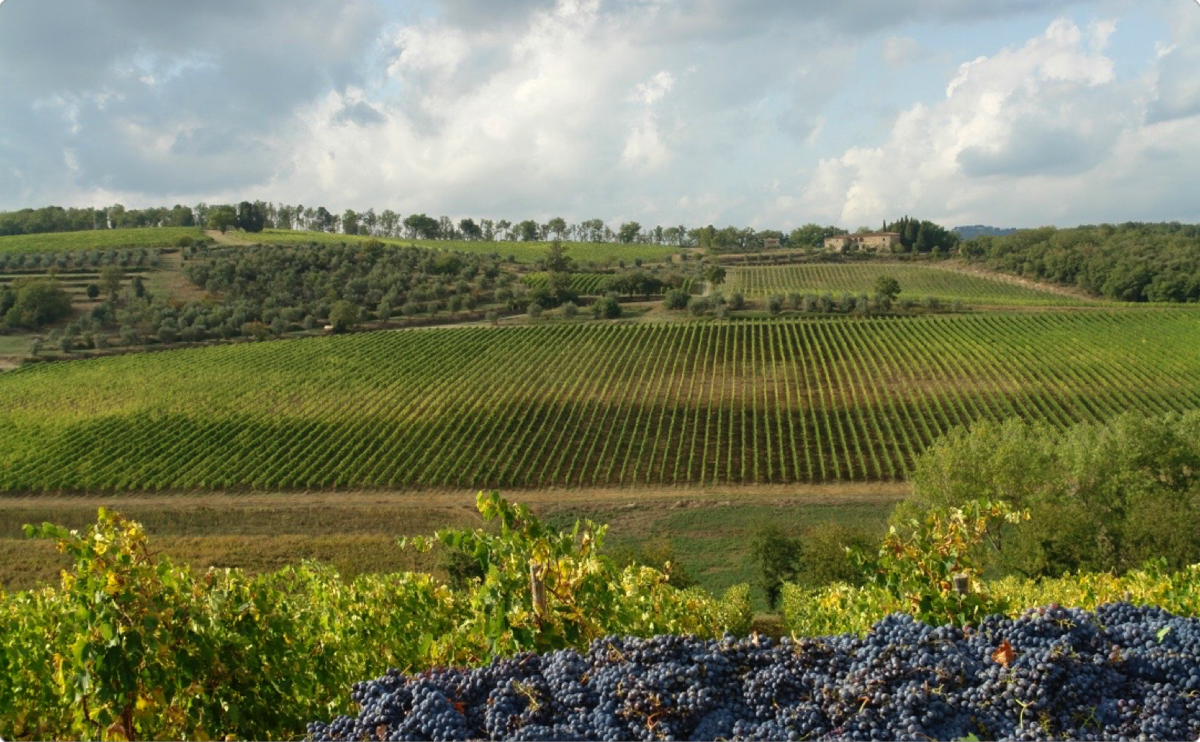
Fattoria Fèlsina and Giuseppe Mazzocolin, a Tuscan Pairing
Dominic Poggiali took a chance in 1966 and bought the estate of Fattoria Felsina in Castelnuovo Berardenga, just to the southeast of Siena. Times were difficult then for Italian wines and the viniculture was less than outstanding. But, Dominic was forward thinking and felt that with the right team, quality wines could be produced on the estate.
He selected a young team to work the land and develop the cellars. They did just that and the estate began to modernize its approach to winemaking while keeping the best traditions of the past intact. The soul of Fèlsina was beginning to change and in mid-1970s Giuseppe Mazzocolin entered the picture of this family business. Giuseppe was challenged to develop the commercialization of the estate and, indeed, he did. A student and professor of the Humanities, Giuseppe had developed a wealth of contacts in and outside of academia.
He was respected for his love of Italian culture and, specifically, that of Tuscany. The foundation that he brought to Fèlsina manifested itself in the international marketplace. Friendships with leading persona such as Luigi Veronelli and oenologist Franco Bernabei lifted
Fèlsina’s reputation and, beginning with the 1983 vintage and the birth of Fontalloro and Rancia, the estate began to take its place among the premier wineries of not only Italy, but also the wider wine world. Fontalloro is the most representative expression of Fèlsina’s Sangiovese.
The Rancia vineyard takes its name from the historic Rancia farmhouse which was once a Benedictine monastery and its soil produces a Chianti Classico Reserva that is an example of compelling mastery.
The countryside of Castelnouvo Berardenga is a place blessed by nature and loved by the Romans as a rest and refresh spot along a historic and important road. Fattoria Fèlsina was once the farm of the Grand Dukes of Tuscany producing mostly olives with only a minimum area devoted to viniculture. In a ode to the past, Fattoria Fèlsina and Giuseppe Mazzocolin have once again begun the production of fine monocultivar extra virgin olive oils… with amazing results.
Giuseppe Mazzocolin
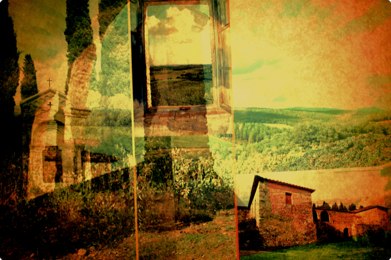
Fattoria Fèlsina is also blessed with a variety of terrains and climates. Its vineyards are characterized by diverse soils and microclimates which come to bear on the wines and olive oils as surely as the Tuscan sun and cool evening breezes. Since 1993 Fèlsina has been replacing vineyards under the careful direction of Giovanni Poggiali. This dedication to terroir drives the estate deeper and deeper into the knowledge of Sangiovese as the face of the estate.
Cabernet Sauvignon has found a home in the vineyards of Rancia Piccola and Poggiolo and produces Maestro Raro, a deep red with shades of purple and violet. Aromas of berries, tobacco, leather and black tea wind there way to a finish that is both elegant and harmonious.
Chardonnay developed from French root stock grown on the nearby estate of Farnetella exhibits notes of tropical fruit and peach as well as hints of spice and vanilla. This classic wine is bottled as I Sistri and has been an important part of the portfolio since 1987.
If you are fortunate enough to visit Fattoria Fèlsina and enjoy their hospitality, look around in the vineyards, the cellars, the olive orchards and the winery… you will feel the presence of Giuseppe Mazzocolin (pictured Here) in every taste of the wines and oils.
And, should Giuseppe be available, take a few minutes to say hello. He might just offer you a taste of something special.
Rancia / photography by Robert Sterling Scott © 1999 all rights reserved
The Mazzei Family's 24 generations of wine production began in Chianti Classico in 1435
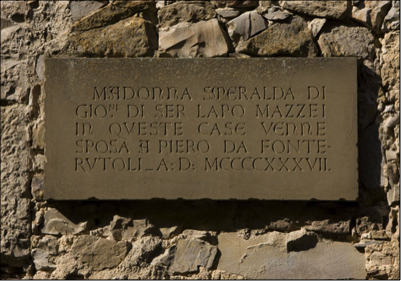
Ser Lapo Mazzei
The first documented reference to Chianti as a production region is found in correspondence from 16 December 1398 between Ser Lapo Mazzei "the keen notary" and Francesco Datini, "the merchant from Prato".
"Payable, on 16 December (1398), 3 florins 26 pennies 8 dinars to Piero di Tino Riccio, for 6 barrels of wine from Chianti ...said produce paid by credit letter of Ser Lapo Mazzei".
In their exchanges these two wonderful characters were discussing the deals of the time, the pleasures of life, and obviously the wine, of which Ser Lapo was a great fan and connoisseur.
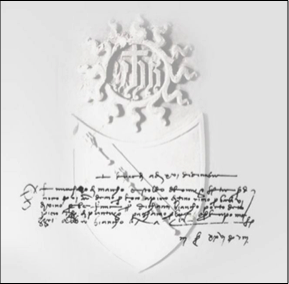
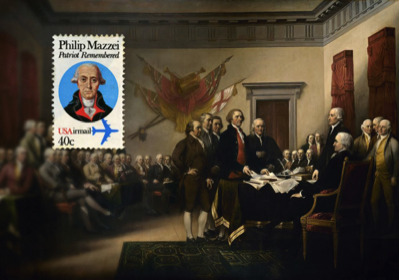
Thomas Jefferson & Philip Mazzei. Two patriots who loved wine and freedom
The inspiration for the layout and architecture of Thomas Jefferson’s mountain-top home, Monticello, are clearly Italian. There is also ample evidence to suggest that Jefferson’s long conversation with his Florentine-born neighbor, a talkative Italian wine merchant named Philip Mazzei, inspired the language used in the Declaration of Independence. In an article translated by Jefferson, Mazzei wrote, “all men are by nature equally free and independent”.
Phillip Mazzei appeared at Monticello in the winter of 1774, accompanied by Jefferson’s London merchant-agent, Thomas Adams. He became a houseguest at Monticello, brightening the last two months of 1774, for Jefferson, who had lost his sister Elizabeth (age 29) earlier that year.
Mazzei, then 43, had been trained a surgeon in Florence, worked as a ship’s doctor, then practiced in the Middle East before settling in London, where he had been a wine merchant for many years. A well-known horticulturalist, he had sailed to Virginia to introduce the culture of grapes, olives and whatever fruit trees would flourish there, and had brought his own crew of Italian vineyard workers with him.
Jefferson indulged some of his favorite activities: building, gardening, buying and selling land. He drew up the charter of a joint stock company for his new friend and neighbor, Philip Mazzei, buying a fifty-pound sterling share in a scheme to cultivate silk, grow wine grapes, and raise olive trees on Mazzei’s slopes near Monticello, all without slave labor and relying on Italian vineyard workers imported from Tuscany.
From April 1774, his notebooks were crammed with plans and expenditures to produce wine in the first large-scale viticulture experiment in North America. That he was not alone in this inability to foresee events is testified by the other shareholders, who included both George Washington and Lord Dunmore. According to local legend, Jefferson was able to greet the thirty workers in their own Tuscan accent. The men, who had heard only English for many months, wept.
Mazzei was born Filippo Mazzei in Tuscany. He studied medicine in Florence and practiced in Italy and the Middle East for several years before moving to London in 1755 to take up a mercantile career as an importer. In London he worked as a teacher of Italian language. While in London he met the Americans Benjamin Franklin and Thomas Adams of Virginia. They convinced him to undertake his next venture.
In 1773 he led a group of Italians who came to Virginia to introduce the cultivation of vineyards, olives, and other Mediterranean fruits. Mazzei became a neighbor and friend of Thomas Jefferson. Mazzei and Jefferson started what became the first commercial vineyard in the Commonwealth of Virginia. They shared an interest in politics and libertarian values, and maintained an active correspondence for the rest of Mazzei's life.
Mazzei’s contribution was acknowledged by John F. Kennedy in his book A Nation of Immigrants in which he states that The great doctrine 'All men are created equal' and incorporated into the Declaration of Independence by Thomas Jefferson, was paraphrased from the writing of Philip Mazzei, an Italian-born patriot and pamphleteer, who was a close friend of Jefferson. A few alleged scholars try to discredit Mazzei as the creator of this statement and idea, saying that "there is no mention of it anywhere until after the Declaration was published". This phrase appears in Italian in Mazzei's own hand, written in Italian, several years prior to the writing of the Declaration of Independence. Mazzei and Jefferson often exchanged ideas about true liberty and freedom. No one man can take complete credit for the ideals of American democracy.
Jefferson on Wine
Jefferson, who seldom dined alone, discovered that fine wines and food were a great way to meet informally with political friends and foes, never talking politics, but dropping a hint here and there of how he felt on a subject. Jefferson’s first exposure to Italian wines had been during his trip into northern Italy in 1787, and he was particularly impressed with those made from the Nebbiolo grape. He served 250 bottles of Nebbiolo while President, but his favorite Italian wine was from the hilltop of Montepulciano about 40 miles south of Siena in southern Tuscany.
The history of the Mazzei family is closely woven into Tuscany's winemaking history, as well as the regions rich political and cultural past. Ser Lapo Mazzei (1350-1412) a winemaker from Carmignano is considered father of the Chianti name. The extraordinary Fonterutoli estate in Chianti has been owned by the Mazzei family since 1435 and has passed down through 24 generations. The Mazzei family's winemaking influence has extended far beyond the realm of Tuscany. In 1774, Filippo Mazzei (1730-1816) was asked by his friend Thomas Jefferson to plant a vineyard at the Jefferson estate in Monticello, Virginia. Jefferson was inspired not only by Filippo's (Philip's) viticultural knowledge but also by his ideas regarding equality. The great doctrine All men are created equal, which was incorporated into the Declaration of Independence by Jefferson, was paraphrased from the writing of Philip Mazzei. Philip's highly significant contributions to Italian American culture and philosophy were commemorated on a U.S. postage stamp entitled Patriot Remembered.
Philip, the wine...
This wine is dedicated to Philip Mazzei (1730-1816), an illustrious ancestor of the family, political thinker, American Patriot and pioneer, together with Thomas Jefferson, of the viticulture in Virginia. Made with a blend of Cabernet Sauvignon selected from othe Mazzie estates, Philip is the quintessence of Tuscany. "The great doctrine ‘All men are created equal’, incorporated into the Declaration of Independence by Thomas Jefferson, was paraphrased from the writings of Philip Mazzei, an Italian-born patriot, and close friend of Jefferson’s." (JFK, "A Nation of
Immigrants")
Winery: Castello di Fonterutoli
Winery location: Chianti Classico, Toscana
Grape varieties: 100% Cabernet Sauvignon
Alcohol: 13.69%
Total acidity: 5.44‰
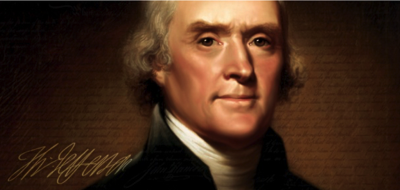
Thomas Jefferson Philip Mazzei
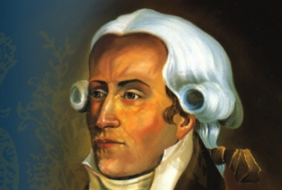
Chianti Classico has it's share of interesting personalities. Guiseppe Mazzocolin is one should you should know...
Giuseppe Mazzocolin
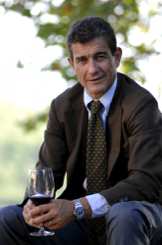

Listen as Robert Scott & Francesco Mazzei talk about Philip Mazzei
Get to Know the Mazzei Wine Estates
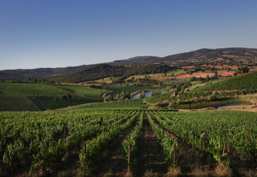
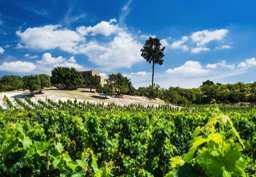
The Estate is located in South-East Sicily, the land of origin of the Nero d'Avola vine only a few steps from Noto, famous for its baroque buildings and Unesco World Heritage Site. The Mazzei identified the latent potential of this land rich with history, culture, and charm, and started an ambitious wine making project in 2003. A property of 50 hectares, the area extends around the 3 buildings "bagli" of the estate, of which the main one enjoys a wonderful view over Noto and the surrounding "gardens" cultivated with vineyards, citrus trees, olives, and almonds.
The hamlet of Fonterutoli, an old bastion of Florence only a few kilometers from Castellina in Chianti, is blessed with an extraordinary view of Siena, which is so close that it is possible to discern the Torre del Mangia and the outline of the Duomo.
The centuries-old ownership of Marchesi Mazzei has preserved the handful of houses, the church of San Miniato, and the villa erected at the end of the 1500's in place of the citadel, more or less unchanged. Time stopped here, maintaining the charm of the Middle Ages.
In the heart of the Tuscan Maremma, on the hills between Grosseto and Montiano and next to the Tyrrhenian Sea, the Belguardo Estate is one of the most important businesses in the region.
Purchased by the Mazzei family in the middle of the 90's, the property covers an overall area of 70 hectares, half of which is devoted to special viewyards.
A very special terroir, which is the result of many years of research, and on which an intense vineyard replanting program was started immediately after the purchase with a precise choice of the varietals and clones.
Famiglia Cecchi, their history and innovation in Chianti Classico and beyond
From generation to generation, Cecchi Family has accompanied the historical journey of Italian wine, which, in less than a century, has gone from being a farmer’s food to a leading national brand, known and appreciated around the world.
The story of Cecchi Family is a simple one. In 1893, Luigi Cecchi, thanks to his wine-tasting talents, laid the foundations for the dynasty that is still known and appreciated today for the production of its high-quality wines. Luigi’s reputation is renown internationally, so much so that already during the ‘30s the family name began its unrelenting growth. In the ‘70s, the family moved to the municipality of Castellina in Chianti, a historical Chianti Classico production site, where the productive process that would then become the hallmark of constant quality began.
Between the end of the ‘80s and the beginning of the ‘90s, the Family chose to confront itself with different territories: San Gimignano, where it produces the Vernaccia, and the Maremma, with its Morellino. Here, today, the Cecchi Family represents one of the prominent names both for the extension of its vineyards and for the quality of its wines.
In the beginning of the ‘90s, Cecchi Family was the first Tuscany business to build a plant-based sewage-treatment facility of wastewater, in order to reduce energy consumption and reuse the purified water. In 2012, the plant was renewed and improved by the Val delle Rose company in Maremma, and then went on to win the Eco-Efficient Tuscany prize given by the Tuscan Region.
Cecchi considers protecting the environment a duty for those who work in the agricultural field. Territories are to be considered a heritage that must be defended and respected.
Thus, for this winery, the word “sustainability” takes on a true and hard-working character, driven by two well-defined policies: on one hand, the safeguard and improvement of the company, agricultural and environmental heritage; on the other hand, the reclamation and employment of new technologies that, moreover, allow the minimisation of both energy consumption and natural resources necessary during production.
Innovation has always been at the heart of the Cecchi Family’s entrepreneurial project, and has become a primary matter for investments in all sectors.
The agronomical part, for its undeniable relevance, is constantly the matter of continuous experimentations and controls, among which the use of new clones, the study of new forms of farming and vineyard operations, and the employment of new technologies.
Research does not stop at just the vineyard, but rather it constantly aims to obtain even the slightest margins of improvement during the operational phases of the wine cellar.

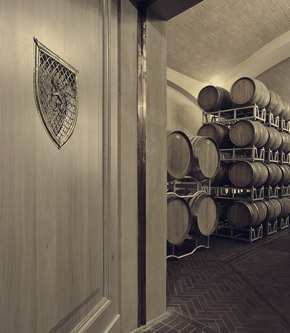
Cesare, and Andrea Cecchi in the vineyard
Cecchi Headquarters in Castellina in Chianti
Entrance to the Cecchi barrell room
Robert talks with Andrea Cecchi about new trends at Cecchi
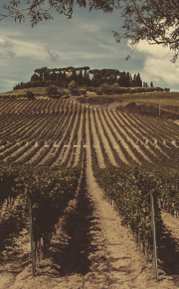
The Cecchi family purchased the Villa during the early '60s, and then proceeded with its restoration and the construction of the wine cellar.
The farming knowledge, alongside with on-going experimentation, enabled a rationalisation of the vineyards.
While on the one hand the winery selected plant varieties that had been historically present in the vineyards, on the other it undertook cutting-edge clonal research to identify varieties suited to the soil and climate characteristics of the terrain.
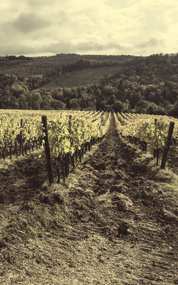
The Cecchi Family purchased the property from the Lucherini Bandini Family, who carefully tended the land for almost 70 years. The families shared a great friend, who kept the families close together: the renowned and formidable wine taster, Giulio Gambelli.
In 2015, as soon as the company was purchased, a meticulous work of soil profiling commenced, consisting in the in- depth analysis of the terrain by employing the most innovative techniques.
In 1996, Cecchi purchased the Val delle Rose winery in the small town of Poggio la Mozza, which lies at the productive heart of Morellino di Scansano. At the time of its acquisition, Val delle Rose counted on 25 hectares under vines.
The study of the soil revealed the enormous potential of this terroir, so much so that the company decided to extend the land under vines up to about the current 100 hectares. Here, the star varietal is Sangiovese.
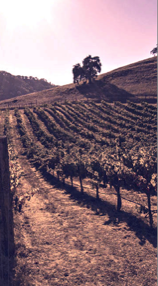
Get to know the Cecchi Winery Estates
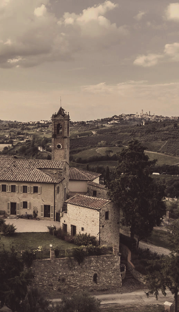
In 1988, the company acquired Castello Montaùto, which, along with the homonymous hamlet, stretches across a picturesque ridge, just a few kilometres from San Gimignano.
The usual attention to environmental impact and the will to get the best out of the available land led the winery to plant about 48 hectares of vineyard out of the 82 owned.
Clearly, the absolute protagonist is the Vernaccia of San Gimignano and, since the wine-harvest of 2013, even one of the most important Tuscan wine denominations, Chianti.
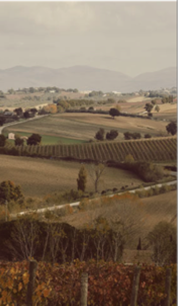
The Cecchi Family quickly identified the elements behind the quality obtained by Tuscan wineries: the combination of the Sagrantino grape variety and the favoured terroir, its unique expressiveness and the socio-cultural roots of local vinticulture. Unlike other other Tuscan estates, which are formed by a single vineyard, Tenuta Alzatura has three different vineyards in three different areas: Monterone, San Marco and Alzatura.
It was Cecchi who started a journey that led to what now can be defined as a perfect blend between innovation and tradition.
It is in the ability to predict the future that one of the secrets of Cecchi Family success lays; a sort of gift handed down from father to son.
Every step forward taken by the winery throughout its history has been preceded by careful and thorough experimentation, and it is the respect for tradition that has always led the family in making its daily decisions.
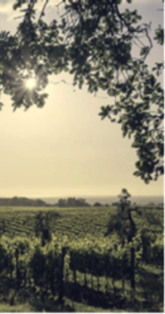
TM
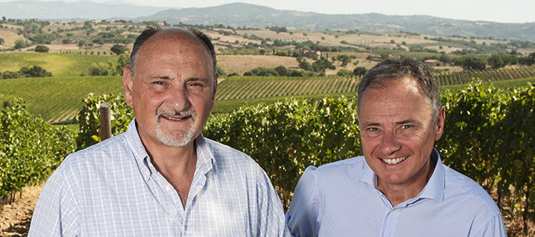
One of the Cecchi barrel rooms
Looking toward Villa Cerna at top of the hill
Chianti Classico Riserva by Cecchi
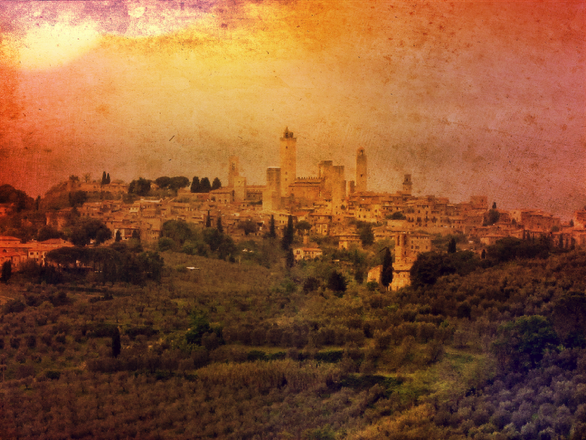
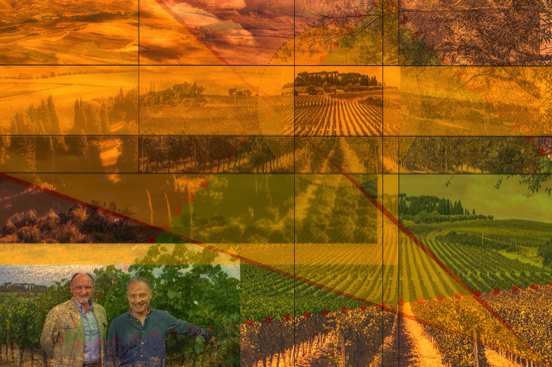
Contact:
robert@winelineradio.com
+1 (407) 758-9931 mobile
TOP
In-depth stories about wine, wine regions around the world, and the people who grow and produce the wines we love.
In this issue:
Volume I : TUSCANY & Chianti Classico
WINELINE MAGAZINE is a wholly owned subsidary of WinelineMedia, a Juris Corporation company / Winter Park, Florida, USA / +1 407.758.9931
WINELINE MAGAZINE is a wholly owned subsidary of WinelineMedia, a Juris Corporation company / Winter Park, Florida, USA / +1 407.758.9931
GO to WINELINETV for important conversations with leading winemakers...



